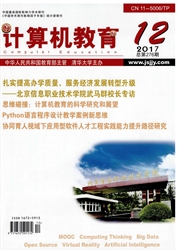

 中文摘要:
中文摘要:
应用现有的分词连写规则书写汉语普通话盲文,会因人因时而得到不同的分词结果。为减少这种分词的不确定性,提出了应用"层次分析法"优化分词规则的方案。首先论述了普通话盲文的"结构分层"理论,继而给出了优化分词连写规则的总体原则、思路和优势,在详细介绍层次分析法基础理论后给出了应用层次分析法分词的原则,并列举有代表性的11个实例进行分析。改进的分词策略,不仅简化了分词规则、在很大程度上减少了盲文分词的不确定性,简单易用。
 英文摘要:
英文摘要:
Writing Chinese Braille with the existing rules of word-segmenting and link-writing would obtain different results due to different users or even the same user at different time. In order to reduce the uncertainty, this paper gives an optimization scheme for the word-segmenting rules by using hierarchy analysis process (HAP). It describes the "structural hierarchy" theory of Chinese Braille; then it presents the overall principles, thoughts and advantages for the optimization; at last, it puts forward the method of word-segmenting rules by using HAP based on detailed introduction to the basic theory of HAP, and analyzes 11 cases with representativeness. The improved word-segmenting rules not only simplify the original rules and greatly reduce the uncertainty of word-segmenting for Chinese Braille, but also are easy to use.
 同期刊论文项目
同期刊论文项目
 同项目期刊论文
同项目期刊论文
 期刊信息
期刊信息
